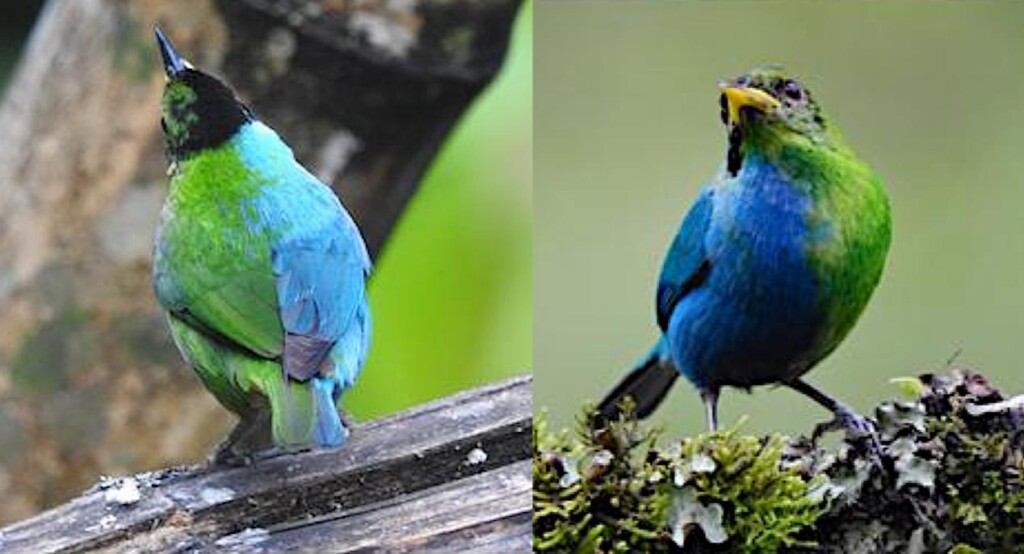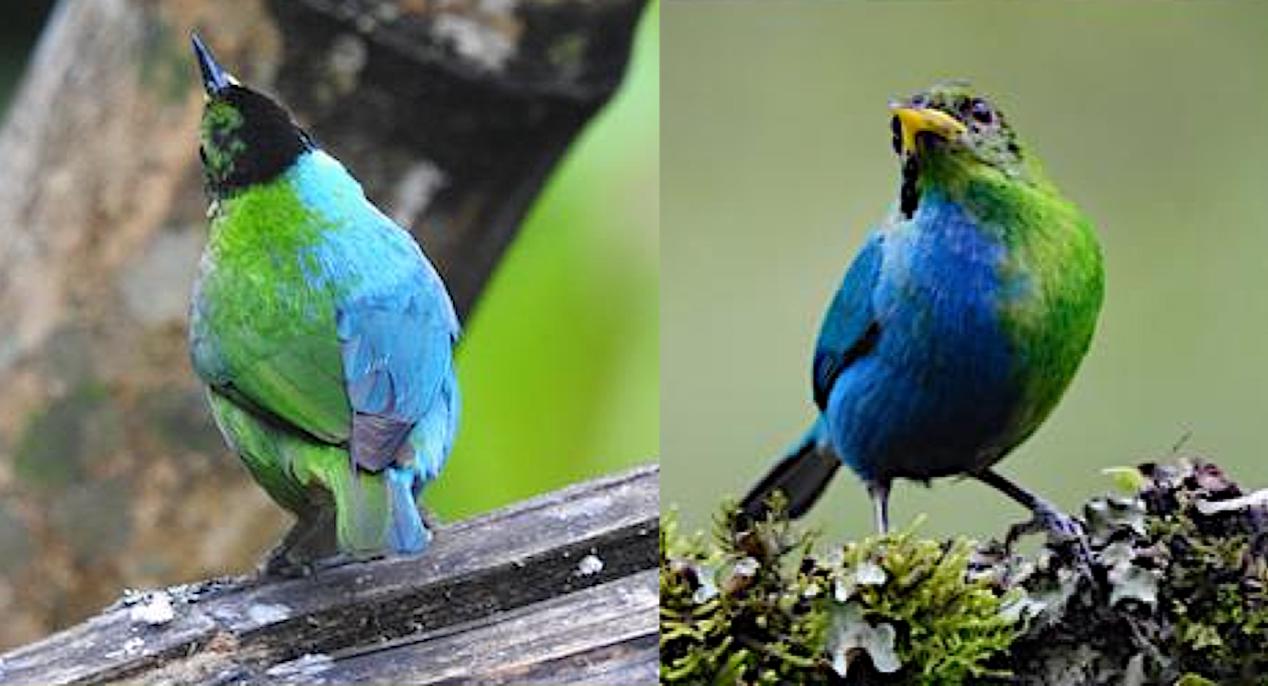
A Kiwi professor of zoology was visiting Colombia and got the surprise of his life.
The South American country has more birds, both endemic and overall, than any other country, but when his companion spied a curious-looking honeycreeper with blue and green plumage, Professor Hamish Spencer was sure it was a once-in-a-lifetime entry on his life list.
Amateur ornithologist John Murillo was with Spencer, and managed to take some incredibly good still photographs of the green honeycreeper. Half of its body was blue, which meant that the men were looking at a “bilateral gynandromorph,” or a bird that had half-female half-male plumage.
“Many birdwatchers could go their whole lives and not see a bilateral gynandromorph in any species of bird. The phenomenon is extremely rare in birds, I know of no examples from New Zealand ever,” said Spencer.
Murillo and Spencer published a paper on their discovery. Published in the Journal of Field Ornithology, it’s just the second time that a bilateral gynandromorph has been observed in this species in 100 years.
Professor Spencer says gynandromorphs are important for our understanding of sex determination and sexual behavior in birds.
OTHER BIRDING STORIES: After US Declared Largest Woodpecker Extinct, New Evidence Supports Belief They Are Still Here
The main groups in which the phenomenon has been recorded include animal species that feature strong sexual dimorphism; most often insects, especially butterflies, crustaceans, spiders, and even lizards and rodents.
“The phenomenon arises from an error during female cell division to produce an egg, followed by double-fertilization by two sperm,” Spencer explains to his university press.
OTHER ODDITIES: Young Woman Has ‘Fairytale’ Experience After Spotting Rare White Deer
He hopes the novel discovery will inspire people to “treasure exceptions” as they always reveal something interesting.
“Be always on the lookout for oddities—who will find the first New Zealand example of a bilateral gynandromorph in a bird?”
SHARE This Wild Morph With Your Birding Friends…




















